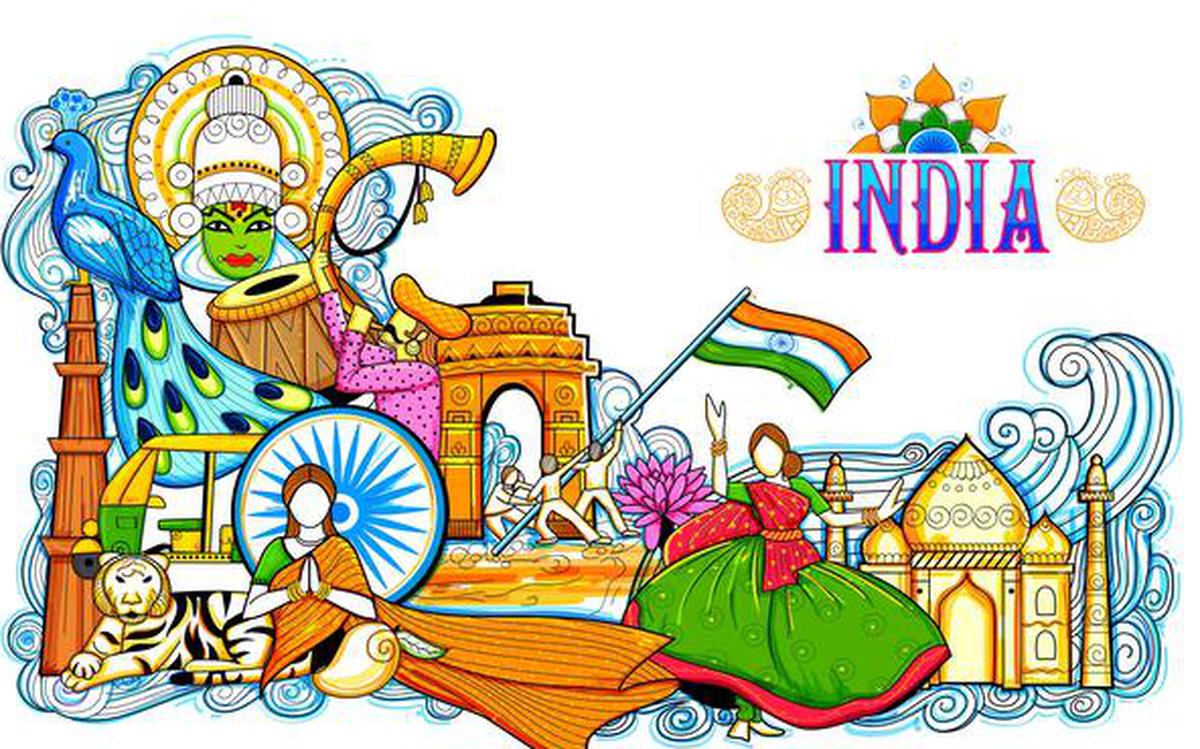Culture of India
Origin
The name of the state comes from the Indus River, which flows through most of India. According to some archaeologists, it was here that one of the first human settlements in Asia arose.
Over the past 10 thousand years, the Indians have never invaded the territory of a foreign country. India gave the world chess, as well as such great sciences as algebra and geometry.
There are many versions on this subject, but the official one is just that.
By the way, the very first university in the world was opened here. This significant event took place in 700 BC. The number of students who came to India from all over the world exceeded 10,000 people.
They studied about 60 subjects. In the 4th century AD, another Nalanda educational institution was opened, which became the greatest achievement of the ancient state in the field of education.
The world’s first cotton fabric also owes its appearance to the talented hands of Indian women. The Roman emperors called it “cloth of the wind”, and the Mongols called it “morning dew”.
How is India different from other countries in the world?

- This is the second state in the world in terms of population and the 7th in terms of territory.
- India is a country with an incredible number of post offices. However, this does not affect the quality of delivery in any way. There are cases when a letter from one locality to another took 2-3 weeks. The distance between them did not exceed 50 kilometers.
- 300,000 active mosques have been built here – more than in any Muslim country.
- More than 1 million Indians have the status of a dollar millionaire. And at the same time, 90% of the population lives on $2 a day.
- The national symbol of the country is the Bengal tiger. Once it was ubiquitous in every Indian state, but today there are about 4,000 individuals of the animal.
- India has a very spicy cuisine, especially in its southern part. Even the requests “No spicy” do not help.
Strange traditions
Indian women rarely give their husband’s name. And all because of strange beliefs, as if saying aloud a name is a sign of disrespect. When addressing, they use the phrase “father of my children.”
Another strange tradition is associated with contempt for widows. This is a bad sign – a good wife should always have a husband. In ancient India, a widow was publicly burned along with the body of her deceased husband.
Indians are accustomed to dine at the Hotel. This is not a hotel, but a public place where you can have a hearty and hearty meal. The word Lodge is used in the name of the hotels.
In Deshnoke there is a Karni Mata temple where… rats are worshiped. There are about 20,000 of them here! Every day, thousands of believers flock to the temple, bringing food and other gifts to animals. If a visitor accidentally kills a rat, he must make amends with a bar of pure gold.
Affirmative answer “Yes!” in India, this is not a nod of the head, but a swaying, similar to our “ay-yay-yay”. Indians often shake their heads from side to side – and this is absolutely normal.
Interesting facts about the sights of India
One of the most visited places is the Lotus Temple. Every year, 50 million people cross its threshold.European tourists love to visit the temples of Kajuharo, which have become famous throughout the world for their explicit erotic sculptures. Scientists have not yet come to a consensus about the purpose of the sculptures of kajuharo.
Many Hindu temples or parts of them are closed to Europeans. And at the same time, for a fee, a temple worker will gladly let you inside and wash you with holy water. Even put a dot on the forehead for an extra dollar.
Since most Indians are deeply religious people, the queues near religious shrines are simply huge.
Prices for visiting attractions differ for locals and tourists. In the second case, the price may be 10-15 times higher.
The last statement does not apply to large cities like Mumbai or Chennai. They have been Europeanized for a long time.

The history of the religions of India begins with the Vedic religion and comes to Hinduism and Buddhism, which originated here. Today, the main religion of India is Hinduism, which is practiced by 80% of the inhabitants.
Hindu culture is one of the oldest and most complete philosophical structures of spiritual thought and behavior formulated in human history.
It was the largest and oldest civilization on the planet, even compared to the Egyptian, Mesopotamian or Chinese civilizations.
Its philosophic-cultural system remains virtually unchanged in its essence to this day, retaining over the centuries the persistent intrusions and domains of various peoples – among which are Persians, Greeks, White Huns, Arabs and Europeans, citing only a few – and remains firmly rooted in originality. Indian people and Hindus all over the world.
